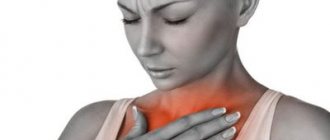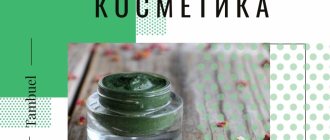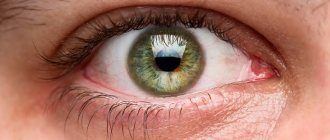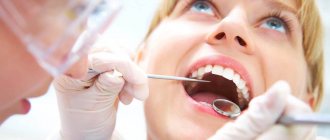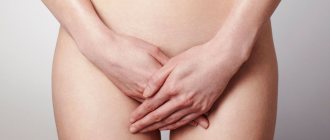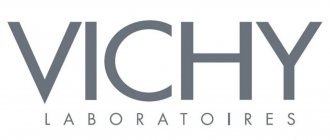Hormonal cosmetics is a hot topic today. Some people are afraid of such creams, but for others it is a wonderful remedy. Where is the truth?
In fact, there are no skin care products with real hormones. Adding natural or synthesized estrogens (female hormones that affect the condition of the skin) to cosmetics is prohibited by law in the Russian Federation, Europe and America. All that is available to companies is to introduce into the products components that resemble hormones - phytoestrogens. They are released from plants.
Ban on hormonal cosmetics
Most often, representatives of the fairer sex think about wrinkles and aging at the age of 30-35. This is because at this age the first “swallows” of aging are noticeable. And during menopause, the content of estrogen in the blood decreases. If there are few of them, then hyaluronic acid and collagen are almost not synthesized. This causes a decrease in skin elasticity and the appearance of wrinkles.
The use of cosmetics with hormones gives almost immediate results. After 2 weeks, the folds disappear, the skin gains elasticity and beauty. But the laws of the Russian Federation, the USA and Europe prohibit hormonal cosmetics containing natural or artificially synthesized estrogens, even despite their effectiveness.
Cosmetics do not use synthetic or natural hormones. Hormone-like plant extracts are added to the creams.
Such prohibitions are due to the fact that hormones that cope so well with wrinkles cause various complications:
rosacea The vascular walls lose their elasticity, a network of capillaries appears on the skin; anemia of the skin. Because the skin does not do the work assigned to it, it becomes transparent and shiny; hirsutism. Noticeable hair appears on the skin; metabolic disorders; weight gain; decreased adrenal function; disorders in the sexual sphere; hormonal imbalance; oncology.
Because of this, hormones should only be used under medical supervision. Moreover, all patients must receive individual doses.
With all this, despite the ban, sometimes there are products containing hormones. They are used in beauty salons to treat scars, cellulite, and aging. It happens that the manufacturer includes some hormones in the composition in order to get high sales.
How effective are cosmetics based on phytoestrogens?
It all depends on the concentration of these hormone-like substances in each specific product. If the concentration is high, then the product will give the desired result, because phytoestrogen is able to normalize the synthesis of collagen, elastin and hyaluronic acid, and, therefore, slow down the aging process. But, unfortunately, in cosmetics belonging to the so-called “mass market”, the content of phytoestrogens is purely nominal. Things are better with pharmacy and professional cosmetics.
However, in any case, doctors do not recommend abusing phytoestrogens - their use is justified only during menopause or in case of severe hormonal imbalances. Cosmetics based on phytoestrogens are not hormonal, they are safe and do not cause side effects. But if your estrogen is normal, then it is better not to accustom the epidermis to external stimulation, otherwise your own regeneration and recovery mechanisms will begin to work much worse.
What are phytoestrogens
So, what are phytoestrogens? Should we be afraid of them? These components are similar in structure and effects to human hormones (estrone, testosterone, estradiol). They can be found in plants: algae, date palm, wheat germ oil, alfalfa, pomegranate seeds, pine pollen.
Plant estrogens are contained in anti-aging products to improve metabolic processes in cells to restore and strengthen them.
But there are a few “buts” here. Not all plant estrogens are able to work externally. Some hormone-like properties become noticeable when they enter the intestines, where they are broken down by bacteria. This is the situation with flax oil. If you take it internally, the skin truly improves, but the positive qualities of the oil are not revealed in external cream.
Review of cosmetics
Nowadays, types of cosmetics with phytoestrogens are replete with abundance. One of the most famous products is the Qi-Klim series. This includes a series of special vitamins for women over 45, a drug that prevents hot flashes during menopause, creams for skin aging (rating), for the correction of facial wrinkles. All of them are made from an extract from a beautiful ornamental plant, cohosh, which has many positive properties. The drugs in this series are, of course, intended for complex use. But they can be used each separately.
Many cosmetic and pharmaceutical companies producing natural organic cosmetics produce evening primrose capsules that solve problems with dry, aging skin. By the way, primrose oil not only supplies it with useful substances, but also has a softening effect on it, allowing it to be smoother and more even.
It is believed that phytoestrogens help stop the formation of wrinkles, sagging skin, remove pigmentation, even out complexion - partially or completely eliminate all signs of aging skin. But creams, no matter how good they are, are able to delay the signs of aging only if they are used constantly, starting from a young age. But if you don’t do this and then try to fix it, then you can only slightly improve its condition.
Among the brands producing creams, serums, and other cosmetics, the following well-known manufacturers should be mentioned:
- Faberlic - Rala for women over 45 years old;
- PLEYANA – produces creams;
- Jason – anti-aging cream;
- Janssen – anti-aging gel in capsules;
- Swisscode Genistein - anti-aging serum;
- Mary Kay – produces a whole line of cosmetics;
- REN – produces Phytohormone replenishing cream;
- Vichy – also a whole range of cosmetics;
- Librederm;
- Yves Rocher - offers a line of anti-aging products of all types;
- Anna Lotan - her professional cosmetics line “Liquid Gold”, designed for aging skin, is in great demand.
These companies value their reputation, so the products they produce are sure to have a positive effect, significantly improving the condition of the skin.
So, are all these products made with phytoestrogens hormonal? Manufacturers say no. These substances only imitate hormones by fraudulently affecting receptors. Therefore, they are absolutely harmless and have no negative effects. But is it?
Phytosterols
The most promising direction is steroidal phytoestrogens, which are called phytosterols. Studies have confirmed that they effectively affect the condition of the skin when added to creams: they can protect, soften, and moisturize.
But there is a “but” here too. The problem is that their influence is 5 thousand times weaker than our hormones. In order for cosmetics with a similar composition to be effective, high concentrations will be required.
For example, soybean oil contains only 0.37% of components similar to hormones. But for them to function, it is not enough to add oil to the cream. It is required to obtain phytosterols and concentrate them using expensive technologies. Of course, only serious concerns with laboratories and research institutes are capable of producing such products. It turns out that a high-quality cream will not be cheap.
Phytosterols require high concentrations. Complex technology is used to isolate them, which is why such cosmetics are never cheap.
One of the myths about phytohormones is that they are addictive. That is, while you are using the product, your skin is beautiful, but when you stop using it, your face quickly begins to show signs of aging. But this is not true. Of course, if you use a high-quality, expensive cream for a long time, and then switch to a cheap and low-quality one, the condition of your skin changes a lot. But here the problem is not in plant hormones, but in the quality of cosmetics itself.
What are hormonally active substances?
In the spring of 2013, the World Health Organization recognized hormonally active substances as a “global threat” to the world’s population. A number of studies prove that hormonally active substances lead to a more frequent occurrence of certain diseases.
At the moment, the European Union has identified 550 hormonally active substances, which are, of course, not only in cosmetics, but also in objects of everyday use, primarily in plastic and products made from it.
Hormonally active substances are chemical substances that act as endogenous hormones, that is, as hormones already contained in the body. In essence, they are not toxic, but, accumulating in the body, they can negatively affect development processes. Therefore, embryos, small children and adolescents react primarily to such substances.
Many substances act in the body as female hormones - estrogens or male hormones - androgens. Their negative effects on the endocrine system are known.
It has now been found that hormonally active substances can:
- Negatively affects sperm production in men,
- Lead to abnormal development of embryos,
- Influence the formation of hormonal cancers: breast, prostate and ovarian cancer.
- Lead to early puberty
Harm of phytoestrogens
So, why is there evidence that phytoestrogens are harmful? It turns out that even with an accurate calculation of the concentration, it is difficult to guarantee the normal effectiveness of the cream. Although these hormones work in ways similar to what we excrete from the body, their effects are difficult to predict. It is impossible to determine what effect it will have on the skin.
In addition, not all plant hormones can have a similar effect. Companies often include lignans in their cosmetics; their effect is reminiscent of phytoestrogens. But it turned out that the effect manifests itself only when they enter the intestines and when they are broken down, i.e. when taken orally. Thus, their inclusion does not affect the skin in any way.
Hydrocortisone ointment for wrinkles
Let's start with the fact that drugs containing corticosteroids, for example the same hydrocortisone ointment, are really effective in treating certain inflammatory skin diseases. But they have an anti-inflammatory, anti-edematous, antipruritic effect, but not a rejuvenating one.
Therefore, the online recipe for using hydrocortisone ointment as an anti-aging agent for wrinkles with the Botox effect does not make sense.
If this ointment gives the effect of smoothing wrinkles, it will not be due to the corticosteroid hormone, but due to the Vaseline, which is contained in the product.
Vaseline will create a moisture-retaining film on the surface of the skin, which prevents moisture evaporation and creates a wrinkle smoothing effect. Of course it's temporary.
And of course, hydrocortisone ointment will not have any muscle relaxant effect. Once you stop using the ointment, the carriage will turn into a pumpkin - all the wrinkles will return to their places.
Fans of this extreme recipe are better off buying regular Vaseline. Firstly, it will cost less, and secondly, there will be fewer side effects.
I already foresee a stream of negative comments from members of the “Pharmacy for the Service of Beauty” club, as usually happens under such articles and videos on YouTube, but I’ll say it anyway.
Hopes for the miracle of eliminating wrinkles with the help of hydrocortisone ointment come from a lack of knowledge on this issue. The less a person knows, the easier it is to believe in miracles.
Where are phytosterols found?
Creams containing phytosterols are suitable for any age. They are easily absorbed, have a light structure, and are therefore useful for young and mature skin. Often the words “phytoestrogen” or “phytosterol” are not indicated in the composition. In the list of ingredients you need to look for plant elements. So, where are phytosterols found:
extract from mimosa bark. It increases skin protection and the number of fibroblasts; ginseng extract. Capable of fighting harmful radicals. Often found in products for dry skin and prone to irritation, found in shampoos; shea butter extract, wild yam, etc. can provide a long-lasting moisturizing effect; horse chestnut extract can provide an anti-edematous effect and remove excess fluid.
What explains the effect of estrogen on youthful skin?
Due to increasing life expectancy, a woman's perimenopausal period is approximately one third. During this period, there is a gradual depletion of ovarian function, accompanied, accordingly, by a decrease in the content of sex hormones (estrogens) in the body. This cannot but have a negative impact on the condition of the skin.
As a result of a decrease in the level of estrogen, disturbances in the processes of keratinization and exfoliation of keratinized layers of the epithelium (hyperkeratosis), changes in the physical and chemical properties of collagen proteins, a decrease in their elasticity and ability to swell, a decrease in the synthesis of new collagen and elastin structures develop, and degradation of collagen and elastin fibers develops.
Read our article about what collagen is.
In addition, the properties and ratio of the content of glycosaminoglycans in tissues, which are hyaluronic acid, which retains water molecules in tissues, heparin, etc., change, disturbances in the synthesis of epidermal lipid complexes, and atrophic processes in the skin, including the sebaceous glands, occur.
Processes that occur as a result of a decrease in the content of estrogen in a woman’s body, that is, hormone-dependent aging of the skin, are reflected primarily on the face. Thickening of the skin's stratum corneum and thinning of the dermal layer occur, the moisture and elasticity of the skin decrease, its relief and color change, and it becomes dry. There is a feeling of tightness on the face, hair growth, age spots and wrinkles appear, and folds deepen.
Such changes create not only cosmetic problems. The loss of external attractiveness significantly affects the psycho-emotional state, leads to a feeling of inferiority in the eyes of the surrounding work team and acquaintances, to a decrease in self-esteem and quality of life. This is especially typical for those women who are accustomed to paying increased attention to their appearance. In addition to all this, a lack of estrogen during menopause is very often the cause of psychoneurotic, endocrine, cardiovascular, bone and other somatic disorders.
All these disorders, including cosmetic problems, are relatively easily eliminated, or at least their severity can be significantly reduced by replenishing estrogen deficiency through the use of hormone replacement therapy with synthetic or natural estrogen preparations.
Flavonoids
Another separate class of biologically active elements from plants are flavonoids. They are not considered phytoestrogens, but resemble their effects: they can enhance the process of synthesis of collagen and elastin, and increase skin elasticity. In addition, flavonoids fight radicals.
Like plant hormones, they work from within the body. It is flavonoids that make dark chocolate, wine, and blueberries healthy. They began to be used in cosmetics. In the list of components you should look for:
green tea extract; from citrus fruits; green onion extract; from blueberries and grapes.
Flavonoids are another beneficial substance found in plants. Their production process is similar to phytosterols.
Cosmetics with flavonoids include almost everything that is said about phytosterols. In order for them to act on the skin, their content is required to be maximum. Such cosmetics always cost a lot, otherwise the presence of these substances in them is only formal. The last option, unfortunately, occurs quite often. For example, quercetin is yellowish in color; at normal levels, it should be yellowish. At the same time, there are creams on the market with quercetin, but they have a perfect white tint.
Hormonally active substances and children
How strong the effect of hormonally active substances in cosmetics is depends on who uses them. Studies have found that embryos, small children and adolescents react to such substances much more strongly than adults, because sensitivity to hormones is heightened during the period of growth and development. Very often, the effects of the use of such substances do not appear immediately, but over time, as has been proven in studies of the effects on the reproductive system (Kortenkamp et. al 2012).
During the development of the embryo, in childhood or adolescence, even the smallest amount of hormonally active substances can lead to dire consequences. And often a small amount of a substance affects the body much more actively than a large one. However, with such substances the rule “the dose turns into poison” does not apply, as was proven in one of the studies (Vandenberg et. al 2012).
Therefore, it is pregnant women and parents of small children who should first of all pay attention to the composition of the cosmetics they use.
Is it worth buying cosmetics with hormones?
The question of whether it is worth buying cosmetics with hormones is difficult to answer unequivocally. Here everyone decides for themselves. After all, their influence often depends on individual characteristics. It happens that an allergy appears. Thus, one cream on the skin of two people will show different effects.
It is better to contact a professional: cosmetologists will help you choose a cream that suits you personally. The “correct” products with plant hormones actually have a positive effect on the skin and change its contours. They are able to smooth out wrinkles, give elasticity, and a beautiful shade. But to achieve a similar result, you will need to use the cream for at least 3 months.
You should not trust various myths about addiction to cosmetics with plant hormones.
People are often intimidated that cosmetics with phytohormones are like a drug and are addictive. As already mentioned, a popular myth is that when using a cream it gives a great effect, but after abandoning it, the skin sags and becomes sagging. This is wrong. In fact, when changing a cream to a lower quality one, the skin changes condition, but not due to phytohormones.
Pros and cons of hormone cream
Disadvantages of hormonal cosmetics:
- rapid skin aging;
- with prolonged use, excessive hairiness appears;
- the appearance of spider veins;
- with prolonged use, problems with internal organs may appear;
- slow wound healing;
- the effect improves after several uses, but not for a long time;
- weakening of the body's defense response due to an excessive increase in hormones.
Important ! After you stop using cosmetics, everything will return to normal. An allergic reaction can appear within 2 hours. Don't overuse them.
Pros of hormonal cosmetics:
- getting rid of skin problems;
- saturating cells with the nutrients necessary for it;
- you can get rid of baldness;
- elimination of sagging skin;
- slowing down skin aging.
Placental cosmetics
Placental cosmetics are a skin product that is created on the island of extracts from the placenta. This is a new product on the modern cosmetics market. Lotions, creams, and hair products are produced from the placenta. But it is important to follow the brand, because... Quality products are produced only by reputable companies.
Such cosmetics are suitable for any age. But it is better to use it at the age of 35-45, when the production of elastin and collagen in the skin decreases. The placenta contains components that can effectively regenerate the skin.
Why and in what cases are hormonal face creams used?
With the help of hormonal cosmetics you can cure inflammatory processes on the face and neck.
Such creams can be weakly active or potent, that is, with maximum depth of penetration into the skin. The stronger the effect, the faster the cream copes with problematic skin , but the higher the risk of side effects.
But most often, of course, hormonal creams are used to prevent and eliminate age-related skin changes (for those over 40 years old). Such hormonal creams are used as therapy to restore the skin and give it freshness.
What is placenta
So, let's figure out what placenta is and where it is obtained for cosmetic purposes. This is the organ that carries out communication and metabolism between the fetus and the mother. During the gestation process, it appears in every mammal.
It contains vitamins, minerals, and acids. The placenta produces the hormones required for normal childbearing. But it also contains many protein factors that have a positive effect on the condition of cells. In cosmetology, placenta is used, which is obtained from humans and animals. If cosmetics contain placenta obtained from humans, then the word “allogeneic” is present in the composition.
Placental cosmetics do not contain harmful hormones. The extract contains only useful components without side effects.
There is an opinion that the placenta is taken from abortion materials. But this is not true. Manufacturers use the organ after a normal birth. And here it does not matter whether the placenta is of human or animal origin; it contains the same bioactive components.
But as for animal placenta, they use only those that grew in environmentally safe regions and on natural food.
What it is?
The ban on the use of animal hormones led cosmetics manufacturers to become familiar with phytoestrogens. It is for this reason that they began to add these biologically active substances to their products. They are obtained from plants such as soybeans, ginseng, red clover, alfalfa, flax, licorice, hops, iris, and red grapes.
Most Popular: Selecting the Best Drugstore Creams for Dry Skin
The structural structure of phytoestrogens coincides with that of human hormones. They are similar in action, but plant representatives differ in that they can act locally. At the same time, phytoestrogens do not affect the entire body, and therefore cannot cause hormonal imbalances.
Although this question has not been fully studied. The properties of phytoestrogens continue to excite experts, some of whom claim that these substances have no effect at all. Others are confident not only in their ability to resist anti-aging skin changes, but also have an impact in the fight against cancer pathologies. True, their opinion is unanimous on one thing: cosmetics with phytoestrogens are completely harmless and do not have a negative effect on the body.
Mechanism of action
Unlike many components that are part of cosmetics that improve the condition of aging skin, plant hormones have the ability to actively penetrate the skin and epidermis. Directly influence cell renewal, thus promoting the formation of healthier, more elastic skin. In addition, their effect on the skin is that they contribute to:
- restoration of radiance and smoothness of the skin;
- preventing its deformation;
- evening out skin tone, regulating sebum production;
- protecting the skin from the harmful effects of sunlight;
- getting rid of age spots;
- stopping the growth of unwanted body hair.
Almost all phytoestrogens are powerful antioxidants. In addition, they have a bactericidal and antifungal effect. Creams that contain these substances activate blood microcirculation, relieve inflammation, and improve skin tone. They can be successfully used in the manufacture of chemical peels and mesotherapy preparations. These substances will also help if necessary:
- preventing hormonal skin changes in women during menopause;
- warnings, correction of skin damaged by sun rays;
- therapy for seborrhea, acne;
- combating baldness;
- skin renewal after resurfacing and deep peeling.
Phytoestrogens are among the components that raise many questions. But if they are correctly combined with other components of cosmetic products, the effectiveness of these substances is undeniable.
Hormones in cosmetics from the placenta
It is believed that placenta cosmetics contain hormones, otherwise they are ineffective. Yes, the placenta is full of hormones. They were present in the first products, whose rejuvenation effect was amazing. But they caused many side effects, hormonal imbalances, etc.
Modern technologies have helped to obtain the required components from the placenta by removing steroids, which is why healthcare allows the use of such cosmetics today. In addition to hormones, the placenta contains many useful components that affect cell growth. They give the skin hydration, nutrition, elasticity, and regeneration.
What hormonally active substances are most often found in cosmetics?
The EU priority list contains about 120 potential hormonally active substances used in cosmetics. The entire list is divided into 3 categories: category 1 contains all substances whose hormonal effects have been proven in animal tests. Category 2 and 3 list substances that are suspected of having hormonal effects on the body.
, which has more than 100 products in its assortment and find out which brands also contain hormonally active substances.*
*According to BUND data
Here I will limit myself to category 1 and list the hormonally active substances that are used in cosmetics:
- Preservatives: Methylparaben, Propylparaben, Et hylparaben, Butylparaben
- UV filters: Ethylhexyl Methoxycinnamate (OMC), 4-Methylbe nzylidene Camphor, 3-Benzylidene Camphor
- UV absorbents: Bezonphenone-1 and Benzophenone-2
- Colorant in hair dyes: Resorcinol
- Conditioner for face and hair: Cyclotetrasiloxa ne
- Antioxidant: Butylhydroxyanis ol (BHA)
- Antibacterial protection: Boric Acid
- Denaturing agent: Diethyl phthalate
- Skin care product: Hydroxycinnamic acid
- Skin protectant: Dihydroxybipheny l
Placenta extract
Placenta extract effectively activates blood flow. It has a positive effect on blood circulation in the skin and helps fight toxins. It activates cell respiration and metabolic processes. Extract from the placenta causes melanin to come to the surface of the skin. From there it leaves with exfoliated cells and keratin.
It has also been proven that placental extract can relieve inflammation from the skin. It reduces redness due to prolonged exposure to UV rays. These components prevent the formation of stains and sagging.
Chemical pot effect
Human-Biomonitoring studies have shown that humans contain a large amount of chemicals. They have been found in tissues and body fluids (Euractiv 2012; Umweltbundesamt 2013).
In addition, it has been proven that several different hormonally active substances enhance each other's effects, creating the so-called cocktail effect.
In tests on rats, it was shown that rat pups whose mothers were administered minimal doses of hormonally active substances during pregnancy had deformed genitals (Christiansen 2012).
Contraindications
At the same time, the use of hormone replacement therapy is often impossible. It is not indicated for:
- pregnancy or if the latter is suspected;
- during breastfeeding;
- abnormal bleeding from the genital tract;
- liver diseases;
- varicose veins of the lower extremities;
- increased blood clotting;
- thromboembolic disease;
- suspected tumor of the mammary gland or other organs;
- endometriosis;
- migraine and epileptic attacks.
In addition, women may become intolerant to hormone replacement therapy drugs and have a subjective negative attitude towards them due to incorrect or insufficient information about their mechanism of action and side effects. Against this background, phytoestrogens for internal use and external use through cosmetics acquire particular importance.

